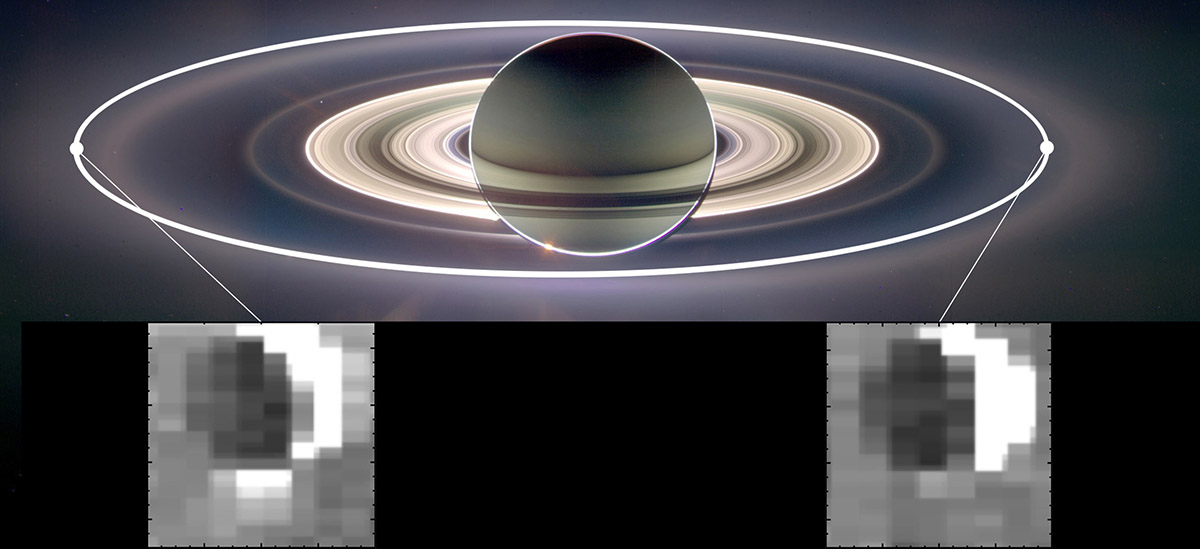The gravitational pull of Saturn changes the amount of particles spraying from the south pole of Saturn’s active moon Enceladus at different points in its orbit. More particles make the plume appear much brighter in the infrared image at left. (NASA/JPL-Caltech/University of Arizona/Cornell/SSI)
Home The gravitational pull of Saturn changes the amount of particles spraying from the south pole of Saturn’s active moon Enceladus at different points in its orbit. More particles make the plume appear much brighter in the infrared image at left. (NASA/JPL-Caltech/University of Arizona/Cornell/SSI) The gravitational pull of Saturn changes the amount of particles spraying from the south pole of Saturn's active moon Enceladus at different points in its orbit. More particles make the plume appear much brighter in the infrared image at left. (NASA/JPL-Caltech/University of Arizona/Cornell/SSI)



